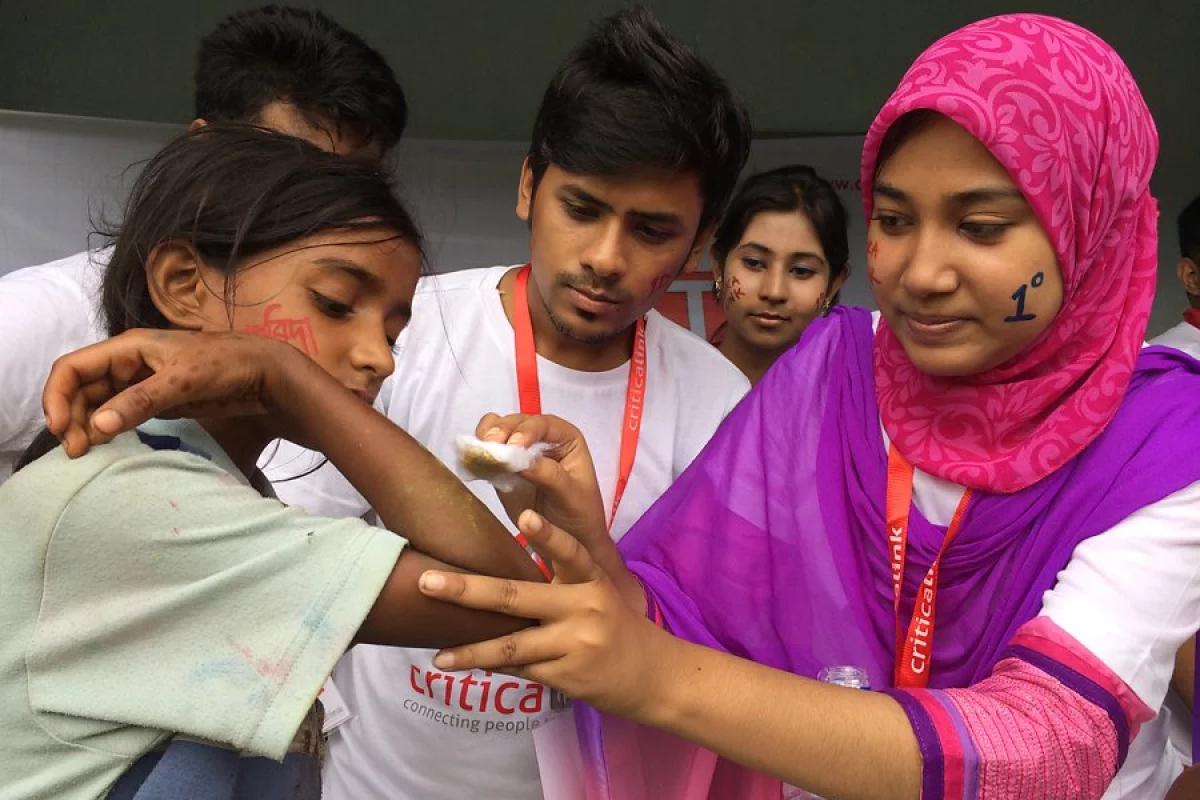Many of us take for granted that, should we have an accident, the emergency services will be able to help. In some places that's not possible though. CriticaLink, being trialed in Dhaka, Bangladesh, seeks to provide volunteer emergency assistance when it might not be otherwise possible.
CriticaLink was conceived by Jennifer Farrell, who had been a volunteer emergency medical technician whilst at university. Farrell explains to Gizmag that, during a visit to South Africa training people in first aid, she realized that ambulances weren't going into slums and people were dying of treatable injuries as a result.
Having moved on to Bangladesh, Farrell says she saw similar unnecessary deaths due to high levels of traffic congestion making any emergency response very slow. With these experiences in mind, she began looking for a way to connect the people she was training in first response care to accidents that were happening. The result was CriticaLink.
CriticaLink allows people to call an emergency number and report an accident or to submit a report using a mobile app. Information such as location, number of people injured and nature of injuries are provided and the app also allows people to add photos to their report. If the report is identified as a "true emergency" and is in one of the areas that CriticaLink serves, a mobile alert is sent to the trained First Responders in that area with details of the incident.
Once an alert is received, First Responders can reply to advise that they will attend the incident and can check-in when they arrive so that timings and number of attendees can be recorded. Care is provided to the injured individuals and additional information about the accident and injuries can be submitted by the volunteers to help with CriticaLink's tracking and research.
Although Farrell tells Gizmag that's it's too early in the trial to have generated any useful data as yet, she says there have been a number of success stories already. She recalls one from just a few weeks ago when an individual fell off a bus and was severely injured in the street.
A First Responder who happened to be on the scene was able to provide immediate care in the street and use the app and social media to summon other members of his team. Along with the other First Responders, he was able to transport the individual to a nearby hospital and then to a larger hospital when it was found that the former was not adequately equipped to care for the patient. The First Responders were also able to contact the victim's family and track down blood donors.
"Her injuries were very severe, and there is no doubt in my mind that, if our First Responders hadn’t been there, she probably would never have made it alive to the hospital where she ultimately received life-saving care," says Farrell. "It is a true testament to the commitment of our First Responders and also how a few people can really impact one life."
Amongst the aspects being looked at in the pilot phase are the extent to which First Responders are responding, their average response time and how response times can be improved. Other aspects being examined include the type of accidents and injuries being reported, the numbers of volunteers needed to cover certain areas and what parts of training need more focus than others.
The pilot phase of CriticaLink launched in Dhaka with the first version of the Android mobile app and an emergency line serving seven areas of the city with about 150 trained volunteers. It started in November 2014 and is expected to continue until December 2015.
Farrell says the organization is currently further developing the app, with iOS and Windows versions, and expanding its coverage within Dhaka and to other cities in Bangladesh. It is also seeking to become financially self-sustaining whilst still offering the service for free.
The video below provides an introduction to CriticaLink.
Source: CriticaLink




